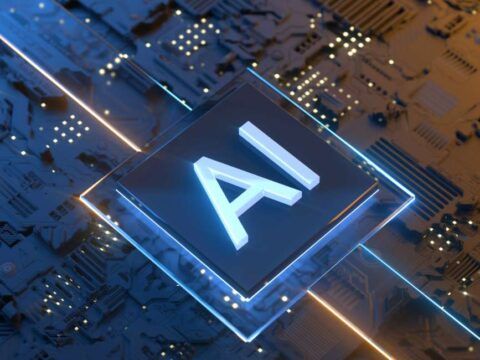
18 Jul The Education of Tomorrow: The Integration of AI
Recent technological advancements and their rapid integration across industries have led to various questions and concerns about the future education of the young learner. These questions, most times in the form of critiques, have drawn the attention of stakeholders such as parents, educators, organizations, researchers, psychologists, scholars, and inventors to make conscious efforts to study and analyze the effects of modern technology on the most important area of human development, education.

To find credible answers to these questions, it’s important to study the summarized evolution of education through the lens of technology integration. Right from the medieval era, before the arrival of the printing machine, education was upheld by different cultures with different modes of instruction. With ancient Greece focusing on philosophy and the Confucian system of China prioritizing moral integrity, education has been focused on studying, understanding, and shaping the human mind to solve problems and influence the environment. Despite being accessed uniquely by the elites, the influence of ancient education was very distinct, leading to major evolutions through technological inventions such as the printer. The access to printed books created more awareness and provoked critical thinking, expanding scientific research and applications. With the need for an increased educated workforce during the revolutionary era, basic education became a universal priority prompting the expansion of public education systems and revised curricula. These developments led to increased technological inventions; the more people got educated, the more these inventions were researched, created, and improved. This clearly shows that education and technological advancements are intertwined and complementary.

Artificial Intelligence, AI, is simply a machine designed and prompted to solve human tasks using human intelligence. Just like a human, it possesses the ability to learn, reason, and apply knowledge across various tasks. The idea that a man-made invention can exude human cognitive skills almost naturally is enough to frighten the common man, leading to concerns about digital dependence and mind incapacitation. What if AI reduces the ability of learners to think critically because they depend on machines to do cognitive tasks? What is the point of having a teacher if a machine can teach my child? These questions become more and more valid with AI advancements and their massive integration across all sectors.

To answer these questions, let me start by saying that AI is an innovative solution, not a problem, and its impact on education is not only necessary but also inevitable. Usually, a human’s first reaction to a man-made solution is astonishment, then followed by fear. Understanding that AI is not human is just as important as knowing that it performs tasks requiring human intelligence. Adopting an innovation that enhances teacher and student productivity is paramount to global development. With AI, repetitive clerical tasks such as lesson plans, lesson notes, class attendance, summative assessments, and individual feedback can be automated, allowing teachers more time to focus on students’ learning needs. Tools like Smart Sparrow and Knewton customize course content to each learner’s needs while Google Forms and Gradescope automate assignment grading, providing teachers with prompt feedback and analytics. These tools reduce teachers’ workload, giving them the priority of focusing on human-led tasks such as personalized teaching, monitoring, evaluation, mentoring, and support. With real-time data, teachers can identify learners’ strengths and weaknesses to revise or improve the curriculum. Also, the use of AI heightens learners’ experience in the classroom. Gamified educational apps such as Duolingo, Kahoot, Quizizz, and Minecraft make learning more engaging and interactive, thereby increasing learners’ interest, motivation, and active participation. Students being able to customize their learning spaces on digital platforms addresses audio, visual, and physical needs. AI transforms a traditional classroom into a techno-innovative hub, where students’ learning quotient is at its peak and their minds challenged to think outside the box.
Does that mean AI is not a threat?

Similar to every other innovation, AI has the propensity to exacerbate the common challenges faced in education, which include the digital gap, inequality, and inaccessibility if we fail to make provisions on how best to use it. Most learners in Nigeria, about 60% (World Economic Forum), are affected by the digital gap, causing educational inequality, skills deficiency, and economic slowdown. AI should be made accessible and equitable to tackle gender and language barriers. If only a few can access and operate AI tools, it will further widen the digital and career gap. Another downside of AI is digital dependence. Training teachers and students on how to use AI is equally as important as using AI. Teachers and students must understand how to leverage AI to enhance their knowledge, skills, and productivity. Doing so will prevent being overly dependent on AI or abusing it for personal goals. If these measures are implemented, I believe what we fear about AI will remain what it is, fear and not our reality.
 Overall, the benefits of AI in education are immeasurable; it enhances students’ and teachers’ performance and productivity, reducing their workload to make room for quality teaching and learning. With AI, learners are more suited to address global issues and provide innovative solutions. The concern should not be about integrating AI into education but about how to ensure it is accessible and equitable by all to avoid a future of digital incapacitation.
Overall, the benefits of AI in education are immeasurable; it enhances students’ and teachers’ performance and productivity, reducing their workload to make room for quality teaching and learning. With AI, learners are more suited to address global issues and provide innovative solutions. The concern should not be about integrating AI into education but about how to ensure it is accessible and equitable by all to avoid a future of digital incapacitation.
Chinomso Glory EKEJIUBA



No Comments